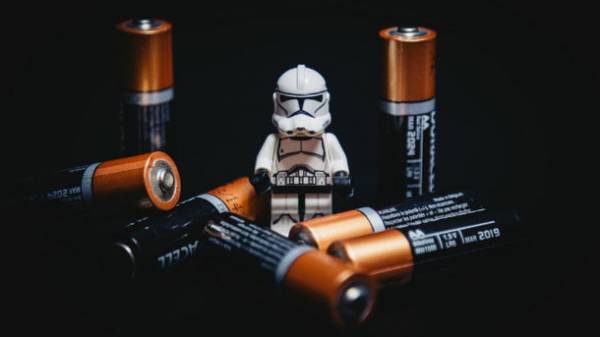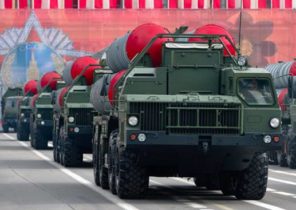
The expert told what to do with waste and what can be so dangerous things familiar to us, writes itworked.
Today it is obvious that the motivation is “Let’s save the nature”, for whom little is convincing. Much clearer and closer, more local, for example, Patriotic desire: I want to live in a beautiful, clean, safe country, surrounded by cultural people…
But at the same time it is absolutely clear the desire of the majority to digest tons of information, and to obtain a turnkey solution to existing problems. It is for this purpose she created the project “Ukraine without smittya”.
1. Batteries
Danger: the contents of heavy metals and radioactive elements. In contact with the ground decay products penetrate the soil and infect it, turning it into absolutely barren, lifeless piece of land. If the concentration of batteries in landfills they turn the entire area for decades and even centuries in the area of equal danger Chernobyl.
“Now the garbage is dumped in landfills all in a row(no sorting): paper, organic, plastic, batteries, bulbs, etc. are All under the influence of atmospheric factors begins to decompose and interact, in the process of decomposition in the layers of debris formed by gas – methane. High methane concentration leads to spontaneous combustion in landfills, during the burning of polymers starts to decay and allocate and dangerous carcinogenic dioxin(the poison that is not excreted from the body) . And no one is immune from the threat then to inhale this poisonous mixture of smoke carried by the wind for hundreds of miles around – and the elite of the village and ordinary village”.
What to do: accumulate used batteries at home in glass containers without access of moisture and sun, and to keep long, and take to the nearest mini-reception point for recycling. Since they are now mass: and some gas stations, stores or cosmetics, Hoo, etc.
2. Light bulb energy saving/fluorescent
Danger: very toxic mercury fumes damage their integrity. Inhalation of these fumes leads to the accumulation of the poison in the soft tissues of the body.
“The danger is that people who are convinced that they will not touch it, might not know that inhaled mercury vapor. Housemates were thrown in the garbage, or a dumpster on the street energy saving (fluorescent) bulbs, they crashed and the air became contaminated with mercury vapors. The child went to throw garbage, breathed those fumes, the poison deposited in the tissues and years later, this case may come back to haunt cancer. So ignorance and irresponsibility is our problem. We are all vulnerable.”
What to do: light bulb waste to accumulate in a rigid package (ideally in the native store) and transfer companies with a special license for disposal.
It is important to know that the disposal of these lamps in Ukraine is paid. If in developed countries this is already included by manufacturers in the product price, we have the manufacturer’s liability in this respect is dictated by law.
“Many think: I bought an expensive lamp, and now I have to pay for its disposal? Yes, unfortunately. While there is no strict regulation of producers ‘ responsibility in law, we have to take care of the absence of the above-described worst consequences of mindless consumption. For the sake of their own health.”.
Note that if the licensed collector, the cost of receiving one lamp less than 4 UAH. (sometimes you can find ads for 1 UAH), it is likely that it is simply buried in common ground.
3. Appliances/gadgets
Danger: dispose of the waste equipment should be made by the same paid licensees. Those in the ideal technique to disassemble into separate components and disposed of separately. But in fact we have a global problem. The barge with its outdated appliances going to India and Africa and there the lower strata of the population, including children, to manually dismantle everything that we thoughtlessly threw away as unnecessary. Of course, it is not environmentally friendly way, for example, boards often set fire to the long fast extraction of metal parts.
What to do: ideally, the manufacturer at the stage of creating and designing your product, have to consider the question of how their product will be disposed of at the end of life. Simplified disassembly and use of components that can be recycled. At the user level we can or to give preference to the technique reliable manufacturers, who use the minimum harmful component of the same plastic material, or simply for as long as possible to use the learned things.
4. Diapers
Danger: in the structure of diapers are non-woven material – spunbond. Essentially the same plastic. With proper processing of spunbond separated from the hydrogel and is the production of shingles, etc. And the hydrogel with the organic matter composted with the addition of special bacteria to produce biogas.
In Ukraine of capacities for processing of used/diapers there. And the period of decomposition of 1 diaper in the nature of from 200 to 600 years… That is our children’s future is shining surrounded by mountains of their own used diapers. So at the consumer level before we can hope for at least reduce their consumption. And by the way, this is not show in it you will see the wonder of a baby with a dry booty.
“For example, I sewed for my children diapers made of several layers of gauze and old t-shirts, on top of which wore swimming waterproof panties. Yes, this option is only good for the house, and Yes, at least once a day(on the street), but the diaper still wear. But consumption is reduced significantly! I can assure you – it’s easy – a matter of habit”.
5. Plastic
Danger: in the duration of its decomposition from 180 years – and frighteningly massive scale of consumption dictated by the cheapness and accessibility. Once Eugene has estimated that in Kiev the average is thrown in the trash, about 1 million packages daily.
“Just think: the life cycle of many packages ranging from one day in our everyday life, turns 200 years in a landfill. Do you realize that at the current rate of consumption we have some dump with a height of 18-storey building? And all this mass, generously laced with plastic, not rot. So just accumulate”.
Plastic surrounds us everywhere – from packaging food, to children’s toys. And here the situation is more dire than one would assume.
“The Chinese have managed somehow to obtain a stable mass of different types of plastic by adding in the melting process and without the toxic substances a component. It is from this stuff then make cheap Chinese toys that we’re telling children. And yet it is also the consequences of the neglect of excessive consumerism.”
Also it is not so simple with the “biodegradable bags” to be proud of some supermarkets.
Alas, this plastic is often added uncertified oxo-additive that forces such a package when released into the environment to break down into pieces. And instead of one pack, we just get many small pieces of the same polyethylene. In the end we get the soil mixed with plastic chips.
“The real European biodegradable bags which do break down into carbon dioxide and water, and not simply disintegrate into small pieces that look different. They’re like a velvety fabric. I brought these from Denmark.”
In some European countries the problem was solved by introducing a tax on plastic bags. They were significantly more expensive and their background alternative to buy paper bags or reusable canvas bags already looks more attractive.
What to do: of course, to refuse the plastic is almost impossible and even absurd. People tend to care about their own convenience and to save time. But now we can strive to reuse plastic bags instead of buying new every time. And also practice sorting at home.
6. Garbage sorting
At the household level, it is enough to have two bins instead of one:
1. For organic waste, non-recyclable (e.g., diapers).
2. For all that is called waste of valuable resources
plastic;
paper;
metal;
glass, etc.
Containers from food, you must first rinse packets free from crumbs and food residue.
Where to dump debris from the second tank intended for special containers for the waste of valuable resources on the street. But note; if the container is easy to open: be sure that the homeless will pull out all valuable, and the company-carrier will have no choice but to drop non-valuable residues in the “common pot” of the truck.
If refuse not, sorted waste can be taken to recycling centres or a ride to mobile points of reception of recyclable materials. Their schedule can be found on the website of the project “Ukraine without smittya” http://nowaste.com.ua
Yes, creating a beautiful and comfortable environment requires some time and a change of habits. You can start today with yourself, or leave it as it is: our children’s children will clean it up. They simply have no choice.







